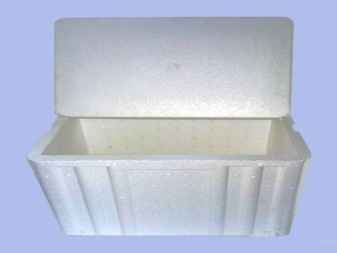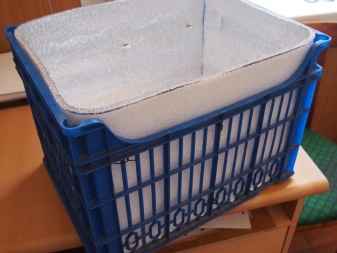Styrofoam thermal containers

Thermal containers made of polystyrene are often used for the safe transportation and storage of various food products and medicines. Today we will talk about the main advantages and disadvantages of such products and how you can make them yourself.


Advantages and disadvantages
Consider the main advantages of foam insulated containers:
- provide increased tightness, protection of contents;
- allow you to maintain the required temperature regime for a long time;
- do not interact with medicinal components;
- not susceptible to fungus, rust;
- do not deform under shock impacts.

Such containers have practically no drawbacks. They can be purchased from specialized stores at an affordable price.
It should be noted that the foam is not negatively affected by harmful microorganisms, so it does not create a favorable environment for the appearance of fungus and algae.


In addition, this material is practically not subject to wear. High-quality polystyrene does not contain components harmful to humans. During operation, it will not release harmful substances into the environment.
Foam insulated containers are lightweight and can easily withstand high pressure loads. And also these products are characterized by low water absorption. They allow for a long time to maintain the quality of the transported products, their presentation.

What are they?
Foam products can be of various types. They all differ from each other in their volume. Most often in stores you can find containers for 1, 3, 4, 7, 25 liters. More voluminous copies of 100 liters are also produced. The shape of such products can be different: round, square, rectangular.
Customers can purchase whole sets, consisting of several such thermal containers with different characteristics of volume and shape.


And they also differ depending on their purpose. So, there are models for transporting food, including fresh fish, medicines. Special foam boxes with a lid for dry ice are also available.

When are they used?
In addition to transporting and storing pharmaceutical products and food, such containers can also be perfectly suited for the transportation of cosmetics, various beverages, and chemicals.
Sometimes they are used simply to transport various fragile items. Some models are even purchased for plants. Sometimes they act as mini-refrigerators or thermoses.

How to do it yourself?
Next, we will take a closer look at how you can independently make such a container with a foam box. An old waste plastic drawer for fruits and vegetables can work best as a base. They make upholstery for him. For this, you can use polyethylene. It is attached to the inside of the box with a wire.
The material inside must be evenly and neatly distributed. After that, the product is sheathed on top with foam. It will be easiest to work with flat foam sheets. They can be quickly cut into individual pieces of the desired size and shape.

Next, glue is applied to the prepared foam blanks.Adhesives that are used to attach panels to the ceiling are best suited. They will provide a secure fit.
The material must be filled in all the holes that are in the plastic box. Then the outer part of the container is tightly wrapped with masking tape. It is removed only after the glue is completely dry and hardened.

The cover is also made separately from foam. After the container is completely ready, the remains of the masking tape are carefully removed, the excess glue is removed.
Consider another option for creating such a homemade container that will act as a portable refrigerator. In this case, first prepare all the necessary materials and tools, such as:
- Styrofoam;
- pieces of foam rubber;
- scissors;
- glue mass;
- cardboard sheets;
- Scotch;
- threads.


When everything you need is assembled, you can start making the thermal container. For this, prepare the base. You can take an unnecessary box or bag as it. In this case, it is recommended to select a light-colored material, it will heat up less. Sometimes technical buckets with the required volume are also used as a basis.
After that, parts are cut out of the foam, which will subsequently form a thermal insulation layer. Having cut out such blanks of the required shapes and sizes, they gradually begin to be laid out in the inner part of the prepared base. They can be connected together with double-sided tape.


Remember that all ready-made elements should be located as tightly as possible in relation to each other. Otherwise, warm air will penetrate into the inside of such a refrigerator. To keep the cold inside as long as possible, foam blanks for the outer part can be wrapped in a special reflective material.
In this container, it will be possible to transport not only chilled food products in order to maintain their freshness longer, but also warm food in finished form. Separately, a lid is cut out for such a ready-made container. It is also better to make it out of foam. At the same time, it will have to go into the refrigerator as tightly as possible.


In this case, the slots in the lid cannot be formed, since warm air will penetrate through these holes. For convenience, you can simply pull the thread through this part of the container. In places of punctures, small pieces cut from cardboard sheets are attached. This will protect the foam from possible damage.
A container made in this way will maintain an optimal temperature regime for 24 hours. If you are going on a long journey, then you can make a large portable cooler bag. It will be able to accommodate a large amount of food, while the product itself will be lightweight.

An overview of the foam insulated container, see below.













The comment was sent successfully.